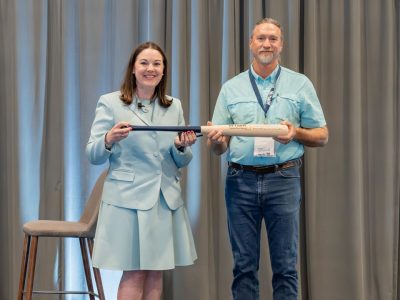Why Surveying is Critical in the Success of your Linear Projects
What is Land Surveying?
The classic “Five Ws” are Who, What, Where, When and Why. Land surveying focuses on defining WHERE. Where are the property boundaries? Where are the improvements? Where are the utilities? Where are the easements? Land surveying answers the “where” question for two very broad categories: topographic and boundary.
Topographic surveying involves gathering horizontal and vertical data necessary to prepare a map showing objects found in a given area. Verifying public or private infrastructure, as-built drawings, cross sections, staking utilities (franchise or public) and tree surveys all fall into this broad category.
Boundary surveying involves the correlation of legal records with field information to produce a map showing the property lines, land area, legal description and any conflicts that may affect title. This includes right-of-way maps, legal descriptions, as-built drawings which include accurate boundaries (improvement surveys), franchise or public utility easement descriptions and platting.
The end result of any boundary or topographic survey is an unambiguous answer to the “where” question.
Surveying for Linear Projects
Linear projects, such as pipelines, electric transmission lines and roads, present unique land surveying challenges. Designers and engineers need to know exactly how the land lays between points A and B to create accurate plan sets. Right-of-way agents need to know where properties begin and end. New parcels or easements must be described and staked on the ground. Boundary lines must be accurately re-established and harmonized over a great distance. This usually involves researching land conveyances made throughout several decades and figuring out how they fit together on the ground today. Professional land surveying is necessary to overcome all of these challenges.
The Latest Technology for the Job
One key to producing an accurate topographic survey is to pick the right technology. Aerial photogrammetry or LiDAR might be best for particularly long routes. Traditional or GPS surveying can be used for shorter routes and to supplement areas obscured from aerial view. Terrestrial LiDAR is excellent for safely capturing data on busy roadways, railroads or under bridges and overpasses. A hydrographic survey unit such as an echo sounder can be used to accurately measure the depths of flowing or standing bodies of water. Often a project will require multiple technologies to create one seamless final result.
Getting it Done
Proper management and workflow are key components of a successful survey. An onsite supervisor is a great option if the scale of the project warrants using multiple survey crews. Sometimes there is no substitute for having someone on site, in person, to handle challenges and situations as they arise.
Projects that are away from the home office need daily, not weekly or biweekly, attention. Survey field crews should have the ability to send and receive data to and from the office. A mobile office system allows the free flow of near real-time information between field and office personnel. Field crews should be equipped with a cellular network-connected tablet and data collector as well as crew-specific FTP credentials. This system reduces the need for additional trips to the field as office personnel will know within minutes if all needed field work has been completed.
This real-time communication speeds up boundary reconstruction as well has topographic survey efforts. Property corners, especially on the back of a tract of land, are sometimes hard to access. A “deed sketch” prepared before any field work has been done is usually good enough to get field crews close to the location of property corners. However, if office staff can reorient the deed sketch to fit conditions found on the ground, field crews will have a much smaller area to search for property corners.
Pulling it All Together
A web tracker is an innovative, web-based GIS tool that allows users to view the progress of both individual parcel surveys and an entire corridor. Access to the web tracker is secure, and each stakeholder (clients, consultants, executives, etc.) can use the web tracker based on role-specific security settings. Documents such as title commitments, field notes, right-of-entry letters, appraisals and maps may be uploaded, edited and monitored. The progress and status of each parcel can be monitored so problem areas may be identified, highlighted and addressed early to maintain an aggressive project schedule.
The Take-Away
Halff has been producing high-quality land surveys for decades. We have professional surveyors and support personnel statewide. Halff personnel are licensed to survey in Texas, New Mexico and Oklahoma. Our 80-person strong survey team has the experience and technology to help you answer “where” on your next project.
Halff is fully invested in sharing valuable information that can help our clients solve immediate issues and plan for the future through innovation and smarter solutions. If Halff can assist your team with a water utility issue, please call Executive Vice President Jessica Baker, PE, CFM, PMP, at (214) 217-6692.


